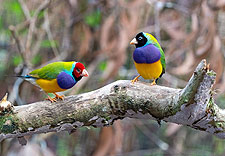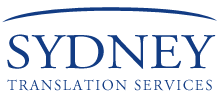NAATI Certified Translation for Katoomba
Certified translation examples from Sydney Translation Services.
Driver License
Birth Certificate
Passport Translation
Marriage Certificate
Death Certificate
Divorce Certificate
Degree Certificate
No-Criminal Record
The Gupapuyngu Language

- Unique Phonology: Gupapuyngu, a Yolŋu Matha language of North-East Arnhem Land, features a rich phonological system with distinct sounds that are uncommon in many other languages. Translators must be attuned to the specific sounds and pronunciations to accurately convey meaning, especially when dealing with oral histories or culturally significant texts.
- Oral Tradition: Gupapuyngu is traditionally an oral language, with written forms developed more recently. As such, much of the translation work involves transcribing spoken language, which requires a deep understanding of cultural context and oral storytelling techniques.
- Contextual Sensitivity: Many words and phrases in Gupapuyngu are deeply tied to cultural practices and the local environment. Translators need to ensure that these cultural nuances are preserved in the translation, especially when dealing with ceremonial or traditional knowledge, where mistranslation could lead to significant misinterpretations.
- Translating Legal and Educational Documents: Gupapuyngu is increasingly used in legal and educational contexts, especially in the Northern Territory. Translators working on these types of documents need to ensure that the correct legal and academic terminology is employed, respecting both the traditional language structure and the specific requirements of official communication.
About Katoomba
 Katoomba is the chief town of the City of Blue Mountains in New South Wales, Australia and the administrative headquarters of Blue Mountains City Council. It is on the Great Western Highway 110 km (68 mi) west of Sydney and 39 km (24 mi) south-east of Lithgow. Katoomba railway station is on the Main Western line. Katoomba is well known for spectacular mountain views and extensive bush and nature walks in the surrounding Blue Mountains.
Katoomba is the chief town of the City of Blue Mountains in New South Wales, Australia and the administrative headquarters of Blue Mountains City Council. It is on the Great Western Highway 110 km (68 mi) west of Sydney and 39 km (24 mi) south-east of Lithgow. Katoomba railway station is on the Main Western line. Katoomba is well known for spectacular mountain views and extensive bush and nature walks in the surrounding Blue Mountains.
At the 2011 census, Katoomba had a population of 8,016 people. Kedumba or Katta-toon-bah is an Aboriginal term for "shining falling water" or "water tumbling over hill" and takes its name from a waterfall that drops into the Jamison Valley below the Harrys Amphitheatre escarpment. Previously, the site was known as William's Chimney and Collett's Swamp. In 1874 the locality was named The Crushers after the name of the railway station that served a nearby quarry.
The name Katoomba was adopted in 1877 and the town achieved municipality status in 1889. Katoomba and nearby Medlow Bath were first developed as tourist destinations towards the end of the 19th century when a series of grand hotels, notably the Carrington and the Belgravia (later the Hydro Majestic) were built and then repeatedly extended.
Other Gupapuyngu Translation Service Locations
Humula Gupapuyngu Translator, Joadja Gupapuyngu Translator, Junee Reefs Gupapuyngu Translator, Kembla Heights Gupapuyngu Translator, Kiandra Gupapuyngu Translator, Sydney Olympic Park Gupapuyngu Translator.




 Katoomba is the chief town of the City of Blue Mountains in New South Wales, Australia and the administrative headquarters of Blue Mountains City Council. It is on the Great Western Highway 110 km (68 mi) west of Sydney and 39 km (24 mi) south-east of Lithgow. Katoomba railway station is on the Main Western line. Katoomba is well known for spectacular mountain views and extensive bush and nature walks in the surrounding Blue Mountains.
Katoomba is the chief town of the City of Blue Mountains in New South Wales, Australia and the administrative headquarters of Blue Mountains City Council. It is on the Great Western Highway 110 km (68 mi) west of Sydney and 39 km (24 mi) south-east of Lithgow. Katoomba railway station is on the Main Western line. Katoomba is well known for spectacular mountain views and extensive bush and nature walks in the surrounding Blue Mountains.